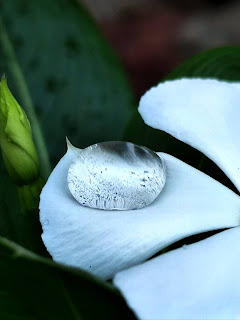Periwinkle
This picture has been clicked on 26 December, 2020 by the device Redmi K20 pro f/1.75 1/122 IOS112 4.77mm and using the wide lens.A few water droplets splashed on the flower of a purple periwinkle flower. This is an aesthetic scene of a wet flower. This species is very common in Indian climate. This picture has been shot by me with a perfect angle, selectively focused, perfect background blur and with a good quality.
India is the valley of a very large species of flora and fauna. Periwinkle is also one of those flora species. It has a very attractive colour and a perfect shape which makes many of the people to plant it in their house.
This picture is of a purple periwinkle flower. They are of many different colours of this periwinkle flower. In India, they are used as a decorative flowers inside the house or in the garden. Periwinkle are also known as vinca or myrtle. There are 12 different species of periwinkle. But the two are most popular species. They are purple and white periwinkle.
Vinca minor has been taken from a Latin binomial name. Few people also called it as Vinca. Periwinkle is denoted by many names and also used for many different purposes. Such as fiore di morte (flower of death). The flower is sometimes associated with marriage (and may have been the “something blue” in the traditional wedding rhyme), sometimes associated with sex work (because of its supposed aphrodisiac properties) and also with executions.
Catharanthus roseus, commonly known as bright eyes, Cape periwinkle, graveyard plant, Madagascar periwinkle, old maid, pink periwinkle, rose periwinkle is a species of flowering plant in the family Apocynaceae.
All the species have opposite side leaves and a single flower. They have five petals. In the middle they have a dark colour having a beautiful colour and texture. They are one of the most common species in India.
It is a evergreen plant and have a dark green coloured leaves. They also produce seeds aside the flowers.
They mainly bloom in the month of March to April. And sometimes they also grow during the rainfall. Their root spread inside the soil which makes a new plant to grow. They born in the starting of spring season and becomes green throughout the summer and rainy season. Their buds are also as beautiful as the flower is. They mainly grow in the alluvial soil.
They doesn't needs any natural or chemical compost to grow but for the growth of a healthy plant, natural compost or cow dung compost can be used. They grow naturally in alluvial soil and they are found near the river Ganga edges naturally, without any manmade growth.
They prefers to grow in shady area but they can also grow in a bright sun shine. Their colour is richer green and bright in partial shade but more of the flowers are produced in sunshine. They need sufficient water, in winter you may use little but in summer they need more water to grow and survive properly. And especially when planting in summer they need more of the water to grow.
Catharanthus is the eighth species of the periwinkle flower. It is used both as a medicinal plant and as an ornamental plant
Catharanthus roseus, which is also known as Madagascar periwinkle is a legendary medicinal plant mostly because of possessing two invaluable antitumor terpenoid indole alkaloids (TIAs), vincristine and vinblastine.
This evegreen plant is also used as a ornamental plant with a high value.
Leave no ground uncovered with the mighty periwinkle! This vigorous trailing plant can easily tackle any tricky shady situation and happily cover your planting space. With its glossy evergreen leaves and cheerful blue star-like flowers, it can really brighten up a shady corner in your garden.follow me on Instagram









No comments:
Post a Comment